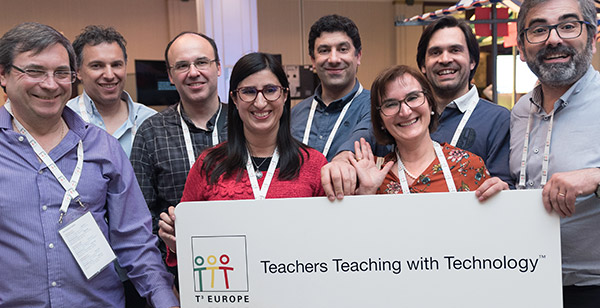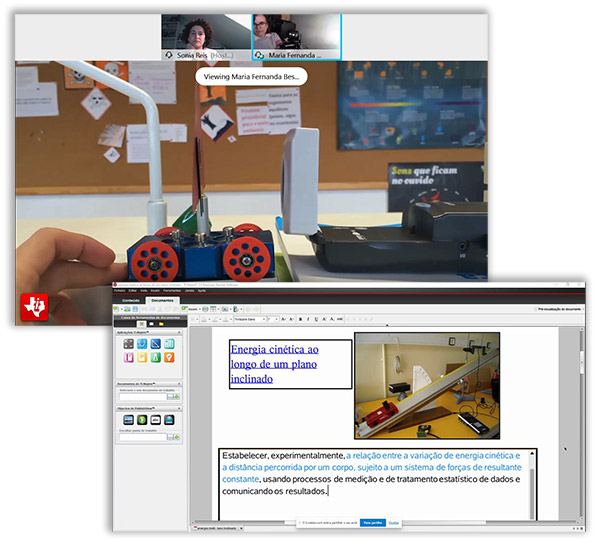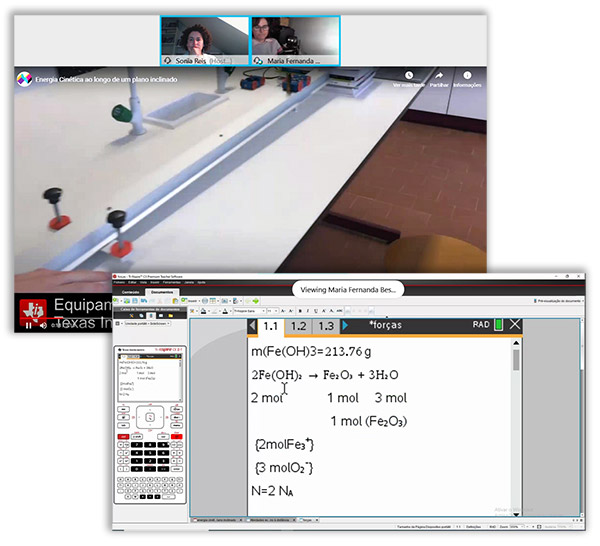How I performed lab experiments during lockdown
How can my students work on the lab experiments that are mandatory in the Portuguese curriculum during lockdown? As a physics and chemistry teacher I would like to share my experiences of switching to virtual lessons because of the global pandemic. Learning by doing is important to me; this is how students get a true understanding of physics and chemistry. When I get the chance, I sneak into a lab to use practical examples to explain scientific concepts, even during my regular classes. When I didn’t have these options during lockdown, I worked on solutions with the help of TI-Nspire™ CX technology.

During a normal school year, I split the students in groups of about four to work on the experimental side of things. If we did not have enough equipment for all the groups, I used a rotating system. Some groups would start by doing the experiment with the available materials and others would work on other tasks. Or I would use different ways to carry out the same experiment that involved different sensors, but still allow students to learn about the same concepts.
Since we use TI-Nspire™ CX technology for these lab activities, this allows me to save data from previous activities carried out in class. So, I have data to provide to students for analysis, if by chance they would not be able to collect data themselves. And we did need this option on occasion. Such as when a group of students did a titration where the pH value did not change. They all wondered what had gone wrong and it was not until later I realized that they had not submerged the pH sensor in the triturated liquid 😊. Luckily, I had some pre-saved data that allowed them to still do the data analysis part of the work.
In 2020 we were still able to teach in school but had to work with some new rules. The students had to keep their distance from one another, and they could not share equipment, so I had to do more demonstrations than I am used to. However, for some experiments I still found solutions. For example, in chemistry I would pair the students, which was allowed. By constantly cleaning the equipment and making sure they washed their hands, I could still offer them the chance to do actual experiments.
Distance learning
When the pandemic worsened, we were confronted with several lockdowns. That made me turn to virtual teaching for 50% of the time. Since my internet connection is much faster than the school’s internet, it was easier to use online resources. For one I use online resources, like simulations with molecules or atoms and short videos provided by the publishers of the students’ books. These lessons are followed by 1 hour of autonomous work where I remain in the meeting and help students when they need to have something clarified.

Of course, that does not the solve the problem of how to work on lab experiments in the virtual environment. So, what I do is this: During virtual class I use the publisher view of the TI-Nspire™ CX software to introduce the activity and goals and show videos of different experiments or simulations. This helps students to visualize the lab activity. Then I provide them with the experimental data I have saved so they can make their own analyses, having adapted the activities to the tnsp format (TI-Nspire™ publisher documents). My students use their graphing calculator to solve the problems, in the same way they would do in the classroom. For them there is no change, really, and the students still get the feeling they are involved in hands-on lab work. The graphing calculator is very useful as it is always available when the students are using the computer for other things, like following my lessons. The feedback I got from my students is very good, and the lessons have a good flow.

In fact, during virtual lessons I use the TI-Nspire™ CX technology much more than I used to in the physical classroom. I apply the technology as a white board to explain all the concepts to the students. This forms the basis of my lessons, as I am not using a digitalization table. For some activities it is even better than a white board – it is easy to copy-paste, for example, and faster than writing by hand. In more theoretical topics, the TI-Nspire™ also helps a lot, as it has the models where I can easily write chemical equations, formulas, and math calculations. The Greek letters and the unit conversion are also very helpful. So, the TI-Nspire™ technology is absolutely mandatory in my virtual lessons and has helped make them so much more interesting for students!

I’m very willing to help teachers who would like to adopt this approach and make their virtual lessons more dynamic. And I have been sharing my files in several T3 trainings for teachers. So please contact me if you would like to know more!
- Download the activity ‘Kinetic Energy experiment using TI-Nspire™ PublisherView’ (.tnsp, in Portuguese)
